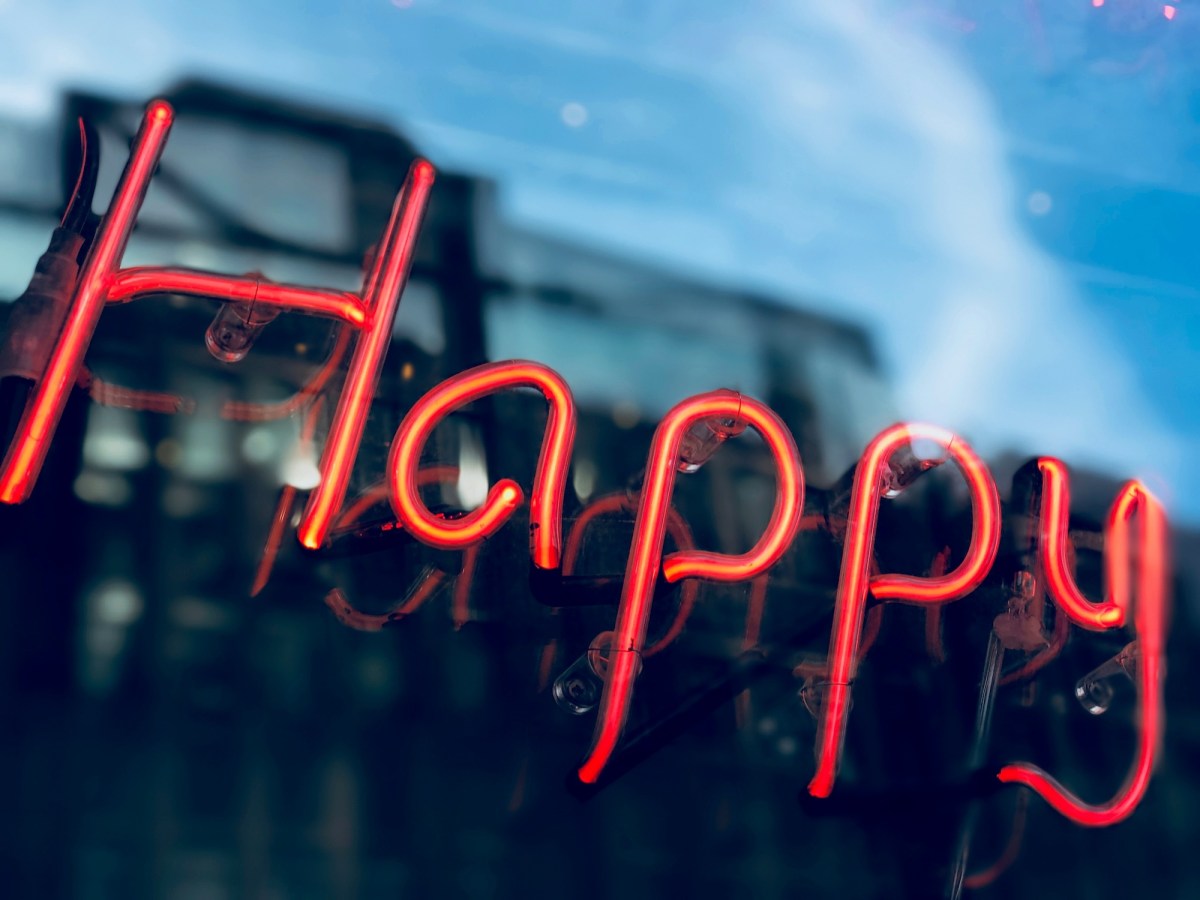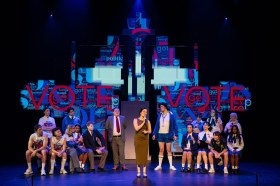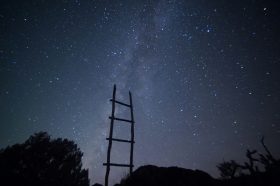A New Approach (ANA) – the Canberra-based think tank and research organisation – has released another report, this time updating its 2019 findings (‘Transformative: Impacts of Culture and Creativity‘ report), which identified that, “almost all of us (82.4%), are attending cultural venues and events, and households are spending more than $25 billion a year on cultural goods and services”.
In 2019 it asked what the impacts of that participation and investment may be, as well as the benefits. Five years on, ANA has drilled down on the benefits – or wellbeing space – in particular.
Titled ‘Transformative Edge 2024‘, this latest research reconfirms that “creating and encouraging opportunities for people to experience arts, culture and creativity assists populations to live well,” says CEO of ANA, Kate Fielding.
However, the report paints a pretty dismal picture. “Our productivity is slowing, cohesion is being challenged, tensions are rising, health is declining and our environment is under pressure,” says Fielding.
And with the lack of funding increases, the impetus for change largely lies with us.
Read ahead to:
The challenges impeding a well nation
Expanding on that outlook, the report notes that:
- Australia had its worst social cohesion results on record in 2023.
- Loneliness and social isolation have worsened since COVID-19.
- People’s sense of belonging and pride in Australian culture declined between 2007 and 2022.
- Slow productivity growth could negatively affect future quality of life and wages.
- The educational aspirations of disadvantaged students have declined since this item was last measured. This has consequences for future equity, workforce participation and success.
- Compared with people in 14 other countries, (in 2024) people in Australia reported experiencing the highest levels of burnout when thinking about their physical, mental or social wellbeing.
- The population in rural and remote Australia faces unique geographic challenges in accessing healthcare.
- Climate change and environmental sustainability are having negative impacts across the board.
These are some pretty big challenges we are facing as a nation.
The report also points to the volatile funding environment for the arts, which creates uncertainty for artists and cultural organisations, making it difficult to plan for the long term or invest in innovative projects.
And then there’s the lingering impact of the pandemic. Many organisations are still struggling to recover from lost revenue and regain their footing, not to mention the burnout caused by trying to catch up.
Arts and culture offer the ‘edge’ to move forward
The new report offers up arts and culture as the ‘edge’ we have been looking for to rebuild social cohesion, strengthen our economies, reconnect our communities and help us to lead healthy, safe and sustainable lives.
Fielding explains, “It’s not a ‘nice to have’ – it’s central to the wellbeing of all Australians,” adding that arts and culture, “is the unexpected counterbalance to a nation in crisis”.
So what is this ‘edge’? The report picks up from the UNESCO member states’ declaration in 2022 that culture is a public global good. Fielding continues, “Australia recently came fourth in the world for ‘creative thinking’ in the OECD’s [Organisation for Economic Cooperation and Development’s] first global assessment of students’ skills in this area. This strong result confirms that, with the right planning, Australia can punch above its weight in creativity and enjoy benefits in many areas of our lives.
To harness this future, the report steps through the same framework used in The Treasury’s policy paper, ‘Measuring What Matters‘ (2023), looking at the five themes: Prosperity, Cohesion, Security, Health and Sustainability.
Read: Navigating depression: 5 essential tips for creative artists
Framework key findings
Prosperity: It’s not just about earning more money, says the report. It found that participating in arts and culture can actually increase people’s aspirations for education and future careers, especially for students from disadvantaged backgrounds. Case studies demonstrate how exposure to creative experiences can open up new worlds of possibility, especially for kids who may not have those opportunities otherwise.
Cohesion: This is where the report gets a little more nuanced. In 2023 Australia recorded its lowest ever scores for social cohesion, meaning people felt less connected and less like they belonged. That’s pretty concerning, but the report argues that arts and culture can actually help improve social cohesion. This feels especially relevant considering the 2023 referendum on recognising Indigenous Australians.
It’s not enough to simply have cultural programs. These programs need to be inclusive and accessible to everyone; for example, providing multilingual tours at museums or offering subsidised tickets to low-income families. Those little things can make a big difference. It’s about ensuring that everyone feels as if they belong and they have the opportunity to participate and break down social barriers.
Security: The report links creative and cultural engagement to active citizenship, creating safe spaces, and what the report calls ‘democratic resilience’, which is basically the ability of a society to withstand challenges and adapt to change while upholding democratic values.
So, when people feel connected to their community and have outlets for expression, they’re more likely to participate in shaping their society in positive ways. It’s about feeling empowered to make a difference, rather than feeling powerless or alienated, and that contributes to a sense of safety and security.
The report also points out that art and culture can provide alternatives to violence by giving people platforms to express their views and engage in constructive dialogue.
Health: The report pushes the point that arts and culture can be a cost-effective complement to healthcare services. It paints a somewhat concerning picture of Australia’s future health, with projections of more people experiencing multiple chronic conditions and the country becoming what they call a ‘wellbeing burnout zone’.
It essentially means that a big chunk of the population is experiencing chronic stress, exhaustion and a decline in their overall wellbeing from work pressures, financial anxieties, social isolation and so on. It’s a worrying trend.
Read: Unpacking slow productivity: how artists can combat burnout and enhance creativity
There’s a growing body of evidence that shows the tangible benefits of arts and culture to alleviate this position – just think about how listening to your favourite music can instantly lift your mood, or losing yourself in a captivating novel can transport you to another world and melt away stress. This needs to be more broadly communicated.
Studies have shown that participating in creative activities can reduce stress hormones, lower blood pressure and even boost our immune systems. For example, singing in a choir has been shown to release endorphins, improve breathing and create a sense of social connection, all of which contribute to better mental and physical wellbeing.
The report even suggests that incorporating arts and cultural activities into healthcare settings can be a really cost-effective way to improve patient outcomes and supplement traditional treatments for patients.
Sustainability: This is where the report gets really interesting, connecting arts and culture to Australia’s commitment to net zero emissions and a more sustainable future. Culture shapes our values and behaviours, including our relationship with the environment. The report highlights how artists and cultural practitioners can use their creativity to promote sustainable practices and even inspire innovative solutions to environmental challenges.
It’s not just about mitigating the negative impacts. It’s also about the role of storytelling, and fostering a sense of hope in the face of adversity, and it’s about harnessing the power of art to help us cope with the emotional and psychological challenges of climate change, not just the practical ones.
Recommendations for action

While it is easy to point fingers and frame out recommendations, essentially the report is a call to action for all Australians to embrace the transformative power of creativity, and work together to build a society that values a vibrant cultural landscape.
This report also really challenges our own assumptions about arts and culture. We often see them as separate from things like economics or health, but they’re really deeply intertwined. It’s about seeding understanding for how each element influences the others, creating this complex web of interactions.
It also starts with recognising the value of arts and culture in our own lives and our communities. So, attend local performances, visit museums, buy art from local artists, and share your passion for creativity with others. Those simple things can really make a difference.
And talk to your local representatives about the importance of arts funding and advocate for policies that make creative experiences more accessible to everyone.
Simply, be an arts and culture evangelist – spread the word, spark conversations and inspire others to join the movement of embracing art for personal and social wellbeing.
The report also calls on investors, both public and private, to broaden their perspective when evaluating funding proposals. So instead of focusing solely on artistic merit or potential box office success, they need to consider the wider social, economic and environmental impacts of cultural projects.
To read the full report: Transformative Edge 2024





